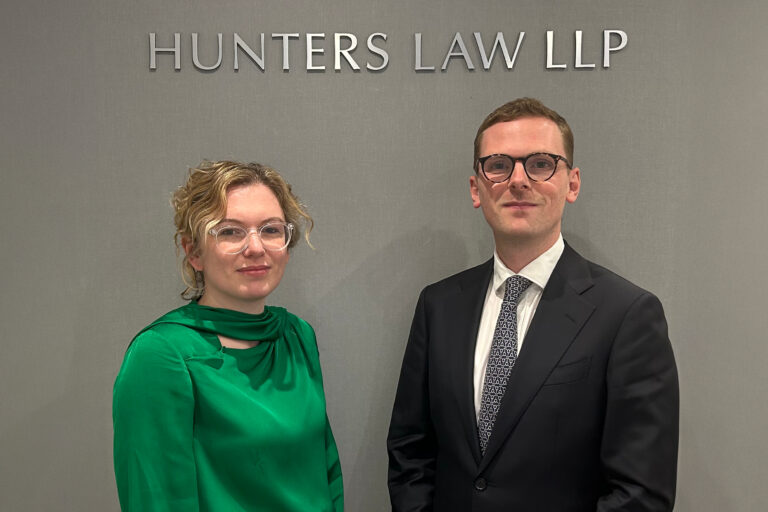Eri Horrocks discusses what separated parents wanting to relocate within the UK need to know in Family Law Week

This article was originally published in Family Law Week and can be accessed here.
Internal relocation and Covid-19
The pandemic has led to lifestyle changes for many, with flexible working becoming the norm, and whilst much of the data is for now anecdotal, there seems to be a trend towards moving to the countryside given the reduced need to live close to the office.
Amongst those looking to move will be separated parents, and the recent case of F v G [2021] EWFC B12 highlighted that this issue is now coming before the court. In that case, a mother who relocated to the countryside during the pandemic failed to persuade the judge that it was in her son’s best interests to live there with her, and it was decided that he should live with his father in London. The case serves as a reminder that the courts now focus solely on the child’s best interests, with no presumption in favour of a primary carer seeking to relocate.
This article will consider the circumstances in which internal relocation cases may come before the court, before reviewing the evolution of the caselaw and examining the court’s approach in F v G.
When is an application necessary?
Whilst legislative provisions limit the international movement of children (s13(b) Children Act 1989 and the Child Abduction Act 1984), the movement of children within the UK (internal relocation) is not specifically regulated by statute.
Nevertheless, there are circumstances in which it would not be permissible for a parent to relocate their children within the UK without either the other parent’s consent or the court’s permission: where the move would entail breaching the terms of a child arrangements order (e.g. in respect of contact), or would require a change in schools – a decision requiring the agreement of all with parental responsibility. In such cases, if agreement cannot be reached the parent seeking to move can apply for a Specific Issue Order; alternatively, the parent opposing the move could apply for a Prohibited Steps Order.
Even where the other parent’s agreement is not technically required (e.g. there is no child arrangements order, the child is below school age, or the father lacks parental responsibility), clients should generally be advised that it is unlikely to be in the child’s best interests for them to make any dramatic changes in the child’s life without conferring with the other parent, particularly in relation to changes which may significantly affect the child’s relationship with the other parent. Plainly, such an approach will not be suitable in all cases, e.g. where a parent is escaping domestic abuse.
Where a proposed move is relatively local and would not impact the exercise of parental responsibility or contact arrangements, no application is likely to be required.
The court’s evolving approach to internal relocation
Prior to 2015, the approach generally taken by the court was that internal relocation by a primary carer should be restricted only in exceptional cases – a stipulation not applied in external (international) relocation cases.
For many years the leading case was the Court of Appeal decision in Re E [1997] EWCA Civ 3084. The mother had sought to move from London to Blackpool with the children to be nearer her family, but the trial judge had placed a condition on a residence order made in her favour, requiring her to live in London. Butler-Sloss LJ allowed the mother’s appeal, noting that whilst the Children Act 1989 limits the circumstances in which children can be relocated abroad, it does not limit relocation within the UK. She stated that a condition of residence is in my view an unwarranted imposition upon the right of the parent to choose where he/she will live within the United Kingdom and concluded that restricting the right of the primary carer to live where they wished within the UK would only be appropriate in exceptional cases.
Although this exceptionality test was subsequently applied, the tension arising from the divergent approaches to internal and external relocations did not go unremarked upon.
In Re H [2001] EWCA Civ 1338, Thorpe LJ questioned why a different test should be applied for relocating to Belfast rather than Dublin, highlighting that the welfare test should be paramount in both cases. He upheld a condition preventing the father from relocating with the children to Northern Ireland due to the impact the separation from their mother would have on the children. However, in Re B [2007] EWCA Civ 1055, Thorpe LJ revisited his approach in Re H and held that upon reconsideration, his judgment had not sufficiently reflected how truly exceptional the imposition of a condition on the primary carer’s ability to choose their place of residence within the UK should be.
In Re F [2010] EWCA Civ 1428 Wilson LJ (as he then was) considered a mother’s application to move the children from North East England to the Orkney Islands. The trial judge had refused the mother’s application on the basis that the difficult journey that would be required for the children to have contact with their father made the case exceptional. Wilson LJ upheld the decision, and commented that, if he had not been bound by authority, he might have wished to suggest that a test of exceptionality was an impermissible gloss on the welfare principle.
It was in Re C [2015] EWCA Civ 1305 that the court faced the issue identified by Thorpe LJ in Re H head on. The mother sought to move from London to Cumbria to be closer to her family; the father opposed the move which would reduce his contact with the child. The trial judge had sanctioned the move on the basis that it was in the child’s best interests and the father appealed. In rejecting the father’s appeal, the court considered whether the principles applicable to internal and external relocation cases differed, and Black LJ (as she then was), giving the lead judgment, made clear that she was unable to find any satisfactory explanation for the different approaches in internal and external relocation cases and that both must be determined in accordance with the child’s best interests.
Black LJ conducted a wholesale re-examination of the caselaw and concluded that Re E had not in fact established an exceptionality principle, and that, when one goes back over the internal relocation cases, it is clear that one of the main influences behind the exceptionality ‘test’ was always the welfare of the child the ‘exceptional cases’ where [the parent’s freedom to choose to where to live] would be restricted were those where the welfare of the child required it.
The current law
Black LJ confirmed that the approach of the Court of Appeal to external relocation in Re F [2015] EWCA Civ 882, decided a few months prior to Re C, applied equally in internal relocation cases.
In Re F, the Court of Appeal had confirmed that the child’s welfare, considered in light of the welfare checklist in s1(3) CA 1989, must be the court’s paramount consideration in a relocation case. This cemented a shift away from the practice, which had developed following Payne v Payne [2001] EWCA Civ 166, of a presumption in favour of granting genuine, well-thought out applications unless the children’s welfare required otherwise. Rather, the court must consider all proposals for the child’s arrangements and conduct a welfare assessment of each so that a comparative evaluation could be carried out – it was not sufficient only to consider the proposals of the parent seeking to move.
By the end of 2015 then, it was clearly established that the same test applied in both internal and external relocation cases, and that it required a comparative assessment of both parties’ proposals with the court to make a decision solely determined by the child’s best interests, with no presumption in either direction.
However, whilst the approaches to internal and external relocation cases are now aligned, the law on internal abduction remains very different to that on international abduction. This was confirmed by the Court of Appeal in Re R [2016] EWCA Civ 1016, which concerned a mother who had relocated a child from Kent to the North East without the father’s knowledge. Whilst under the 1980 Hague Convention a child who has been abducted internationally must be summarily returned unless one of a limited number of defences apply, following an internal abduction the court must be guided by the child’s welfare. If a child has become settled in their new location, return may not be in their interests.
Internal relocation cases since Re C have been limited, though in AH v DT [2017] EWHC 36 (Fam) the court had to determine, following an internal abduction, whether the child should live with the mother in Kent or Northern Ireland. Baker J confirmed that the trial judge had correctly followed Re C by approaching the matter by looking at which option would best promote the child’s welfare.
F v G
F v G is a useful example of internal relocation in the context of the Covid-19 pandemic, affirming that the courts continue to follow Re C, focusing solely on the welfare test with no gloss or presumptions. The case is unusual in that it was decided to separate siblings, highlighting how fact-specific the welfare test can be here, each sibling’s needs pointed in different directions.
The court was concerned with two children, aged 3 and 9. Following the parents’ separation in 2017 they shared care of the children, and at the start of lockdown in March 2020, agreed that the mother and children would temporarily move from London, where both parents lived, to the countryside, so that the children would be able to enjoy more space. However, the mother decided in summer 2020 that she wanted to remain in the countryside permanently, one factor being that her new partner lived nearby. The father opposed this on the basis that it would impact his relationship with the children; his work meant he was unable to relocate.
During the proceedings the father accepted that the younger child should remain with the mother and spend as much time as possible with him; the focus was therefore on the older child. It had been decided at an interim hearing that he should return to London in September 2020 so that he need not change school as this would be the least disruptive arrangement for him pending the final hearing; disruption was a particular concern as the child was autistic.
HHJ Lloyd-Jones recorded that:
Since the decision in Re C in 2015 it is clear that as in any other decision the decision made by a court under the Children Act for any child must be guided by the paramountcy principle in the Children Act -namely that it is the welfare of the child that is paramount. The welfare of a parent is only important in so far as it impacts on the welfare of a child.
In the circumstances the question was whether it would be in the child’s best interests to live with his mother and younger sister in the countryside, or with his father in London. Having heard evidence from the parties, a Cafcass officer and a child and adolescent psychiatrist (with whom she was not impressed), the judge found in favour of the father.
The judge raised concerns about the mother’s approach, noting that she had changed her position on whether it was a priority to keep the children together, and that whilst she had talked about her unbearable heartache she had not contemplated returning to London or visiting the older child there. The judge reflected that this causes me to question how child centred her plans really are and causes me to think that she is seeking to mould the children’s lives around her own plans.
By contrast the judge found that the father had a clear understanding of what would be in the child’s best interests and was impressed at how the evidence he gave accorded with the evidence of others; the judge also noted the father’s more effective management of the child’s meltdowns.
After reflecting on the evidence, the judge carefully applied the welfare checklist, reminding herself that the child’s welfare is the court’s paramount consideration. She concluded that the father was more focused on what was best for the child, that the child’s autism and difficulties with school meant that there was a risk in introducing change, such that the balance came down in favour of the child living with his father. Whilst the judge expressed unease about separating the siblings, her order provided for them to spend every weekend and the entirety of holidays together, alternating between their parents, meaning they would spend the majority of their time together.
The case serves as a reminder of just how fact-specific relocation cases are: the outcome was different for two children in the same family because of their distinct needs. The case should give separated parents considering relocation in the wake of the pandemic pause for thought. It undoubtedly harmed the mother’s case that the judge considered she was motivated by her own, not the children’s interests. Any parent considering a move opposed by the other parent will need to reflect on whether the proposed move will genuinely benefit the children, in light of their particular needs and their relationship with their other parent, and be sure to present their case from that perspective.





